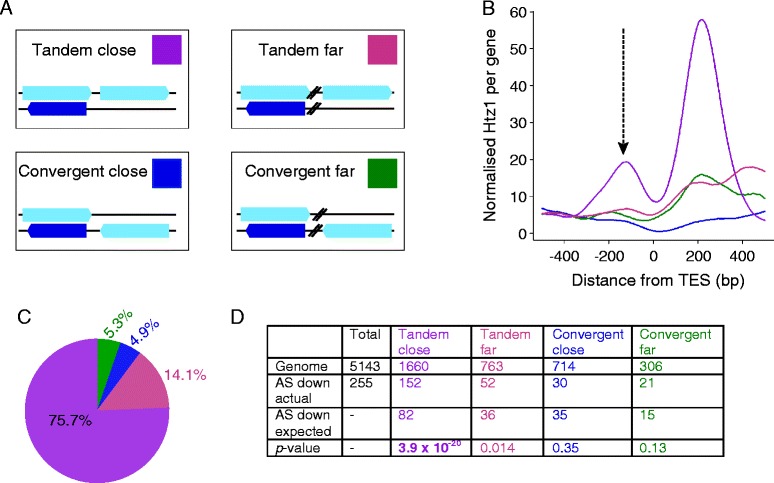Figure 5.

Htz1 predominantly affects tandemly arranged sense/antisense genes. A. Genomic arrangement of the 4 gene categories, with sense transcripts depicted as light blue boxes on the + or – strand and antisense transcripts shown as dark blue boxes. Tandem or convergent refers to the sense transcripts. Close genes have <300 bp between them, while the distance is >300 bp for the “far” genes. The coloured box for each category is the key for B, C & D. B. Htz1 levels at the 3' ends of genes, aligned by TESs and coloured according to A. The arrow indicates the 3' peak upstream of the TES that we have focused on. Convergent genes have less Htz1 associated with their 3' ends, with “tandem close” genes having the highest Htz1 levels. C. Quantification of the 3' Htz1 signal shows that the majority of 3' Htz1 is found at tandem genes. D. Htz1 affects a significant number of tandem close antisense transcripts. The number of antisense transcripts down-regulated in rrp6∆htz1∆ was compared to the number in that category in the genome for each of the 4 gene arrangements. The p values are derived from Fisher’s exact tests.
